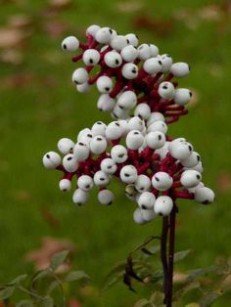Do you know how to identify poisonous plants in the garden? Quite easy, these poisonous plants persist some common traits and by detecting these traits, you can identify them easily.
Generally poisonous plants cause harm either by ingestion or touch. Both the phenomena are dangerous especially for people with certain allergy and sensitivity: dermatitis, nausea, vomiting, itchiness are usual symptoms. They can be harmful for pets too, that is why the best option is to remove them securely as soon as you find them in your garden.
Milky Sap
Not every plant that releases milky sap is poisonous, but most of them are. It’s one of the most common traits you should look upon— twist a leave from gloved hand and see if a plant releases milky sap, avoid ingesting it. Some common plants that release milky sap are calotropis, milkweed, papaya, plants of euphorbia genus, and balloon flower. Fig and ficus tree also leak sap, which can cause skin irritation in sensitive people, if touched. Learn more about milky sap plants
Yellow and White Berries

Plants like doll’s eyes (shown in the picture) and poison oak, forms white and yellow attractive berries like fruits, which are highly poisonous and cause Nausea, diarrhea, vomiting like symptoms when ingested, and can be fatal if eaten in large quantity. When you find an unknown plant bearing berries, always take care if it might be a poisonous plant.
Umbel shaped plants
Such plants produce umbel or umbrella shaped leaves or flowers or plant itself looks like an umbrella. This type of plant usually grows in damp and abandoned areas without any care. Water hemlock (cicuta maculate) and cow-bane are the most poisonous plants grown in US, its parsley like flowers grows in umbel shaped clusters. It can even kill an adult, if certain amount of it ingested.
Also Read: Plant that Causes Blindness
Glossy Green or dull Leaves
This one is one of the most common characteristics of poisonous plants— glossy green and attractive leaves or dull in shade. These leaves are found in pattern, teeth like edges and smoothness on leaf. Some examples are stinging nettle, poison wood (a relative of poison ivy) and poison oak.
Single leaf, three leaflets
Best way to identify poison ivy and poison oak, there are three leaflets in every leaf, making a pattern of one upright and one on each left and right side. If you ever notice a vine like plant with glossy green leaves and three leaflets in a leaf, then be aware: It’s a poison ivy.




Thank you so much! with this, i can identify poisonous plants!
We had to cut down a huge tree for rot and left the stump we are inundated with fungi. All types of fungi. The ones on the ground begin with white tight clusters then turn black and really stink! My dogs won’t touch the them but I worry if they are poisonous. We live in north texas. Love your site! Thank you!
Im not sure, but get rid of them. if they are mushrooms… its kind of the rule.